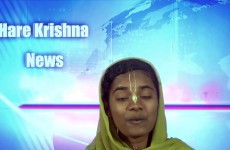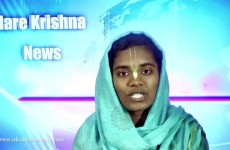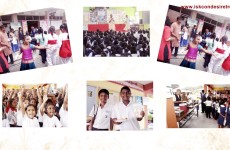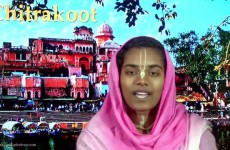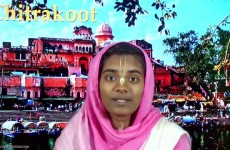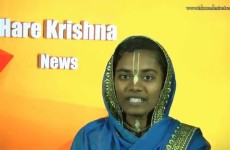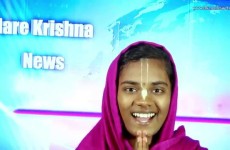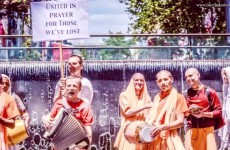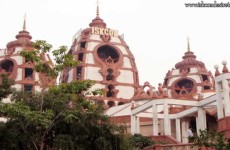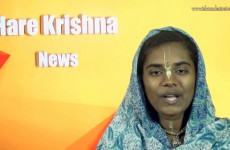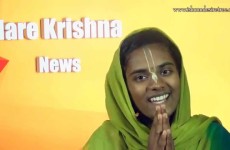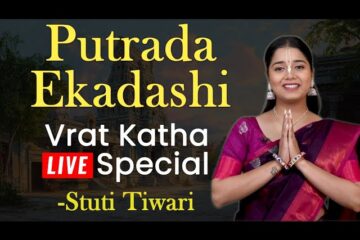An intriguing and inspiring new documentary by French filmmaker Vasudeva Das takes viewers into the world’s largest Bhakti Vriksha community, comprising of multiple Krishna conscious congregational groups.
The twist? It’s located in the Persian Gulf, in a country whose name is withheld due to its laws against public exhibition and propagation of non-Islamic practices. Hence the documentary’s enigmatic title – “Somewhere in the Gulf.”
The hour-long film, shot over March and April last year, tells the story of how Indian expatriates Vijay Venugopal Das and his wife Prema Padmini Dasi began their Bhakti Vriksha community in 1988 by holding small Krishna conscious programs in their home.
Respecting the local laws not to try to convert Muslims, they reached out only to fellow Indian expatriates who were in the Gulf to earn money for their families before moving back to India.
From no devotees at all in our unnamed country, the community grew to 2,000 people in one decade. In the next ten years, it expanded to 5,000. And today, it consists of an incredible 8,000 Bhakti Vriksha members practicing Krishna consciousness.
What’s more, no less than 1,500 of these are now initiated ISKCON devotees, chanting 16 rounds of the Hare Krishna mantra a day and following the four regulative principles of no meat-eating, no intoxication, no illict sex and no gambling.
Vasudeva’s film, hosted by the informative and amicable Frenchman, takes us inside the Bhakti Vriksha groups that have created this astonishing phenomenon.
There are currently two major Bhakti Vriksha groups in our country, one dubbed “Mathuradesh” and the other “Simantadvipa.” In each city there are dozens of Bhakti Vriksha “cells,” fifteen-person groups who meet in a Bhakti Vriksha member’s home weekly.
Each meeting is guided by a “servant leader,” lasts one or two hours and consists of seven parts. First off there’s an ice breaker, during which members talk about what’s going on in their daily lives and relate it to Krishna. This is followed by a kirtan, and a reading from the book The Glories of the Holy Name.
Members then chant one round – 108 mantras – of the Hare Krishna mantra together on beads; read a scriptural passage and discuss its meaning; read something on the importance of spiritual outreach; and finally honor a prasadam meal together.
After some time of systematically progressing in Krishna consciousness through this program, members start their own cell group, and thus the amount of members grows and grows.
There are also further opportunities to progress in Krishna consciousness outside the meetings. Devotees come together for all-day japathons and sixteen-round chanting days. Many have completed Vaishnava etiquette and grihasta ashram seminars, as well as the Bhakti Sastri course on Srila Prabhupada’s books and the Mayapur Institute’s Teacher Training Course. And of course, many have taken initiation.
But the Bhakti Vriksha community doesn’t just provide spiritual education – it also caters to other elements of a balanced life. Members are virtually family. They take turns watching all the children while the other adults attend meetings. Children have their own meetings, with questions and answers about Krishna, learning verses, and kirtan.
And there are youth camps, cricket matches and picnics on the beach – one particularly uplifting clip in the film shows about twenty-five families riding dirt bikes and doing kirtan through the sand dunes together.
Bhakti Vriksha leaders even offer counseling to help members in their lives and relationships.
“Everyone is considered as part of a family,” says Vijay Venugopal in the film. “They are helped in all aspects of their lives. If they face any problems in their physical health, in their economic situation, in their spiritual life, there is always someone to help them. There’s a whole support system of devotees.”
He points out that there are now three generations of Bhakti Vriksha members in our unnamed country. “Families developed and then the second generation has now grown up, and they also got married,” he says. “And now there’s a third generation also, of youngsters who are now attending our Bhakti Vriksha programs. And this loving relationship carries on for an entire lifetime.”
The members of Mathuradesh and Simantadvipa’s Bhakti Vriksha communities include both wealthy professionals and laborers such as construction workers, tailors and barbers.
More – http://iskconnews.org/worlds-largest-bhakti-vriksha-community-hidden-in-persian-gulf,4807/













